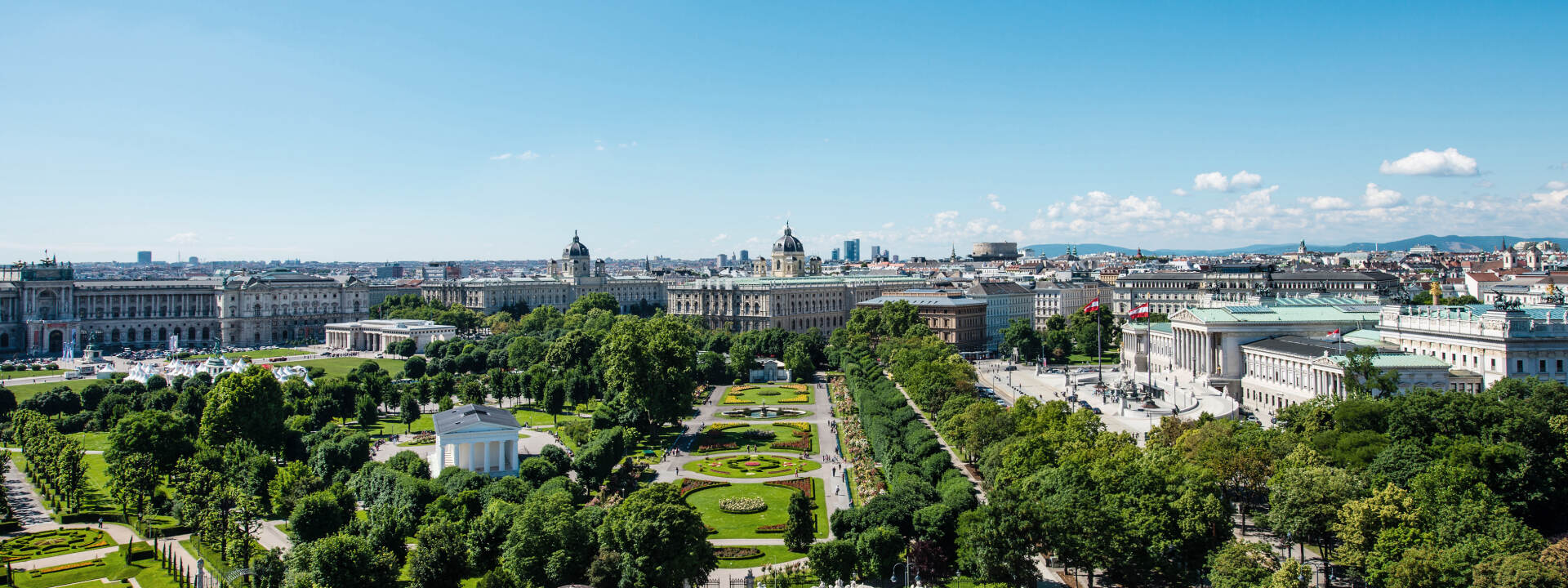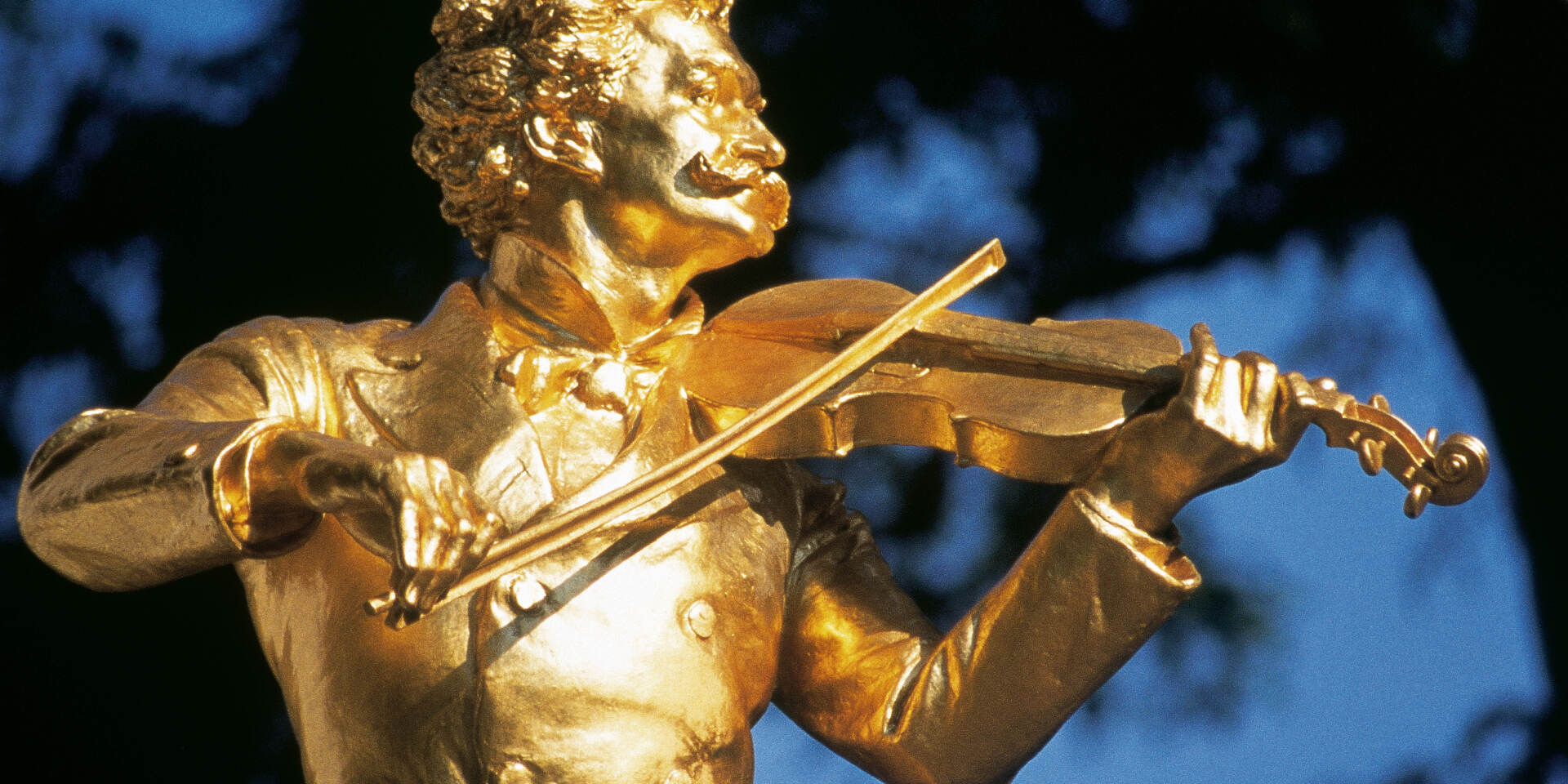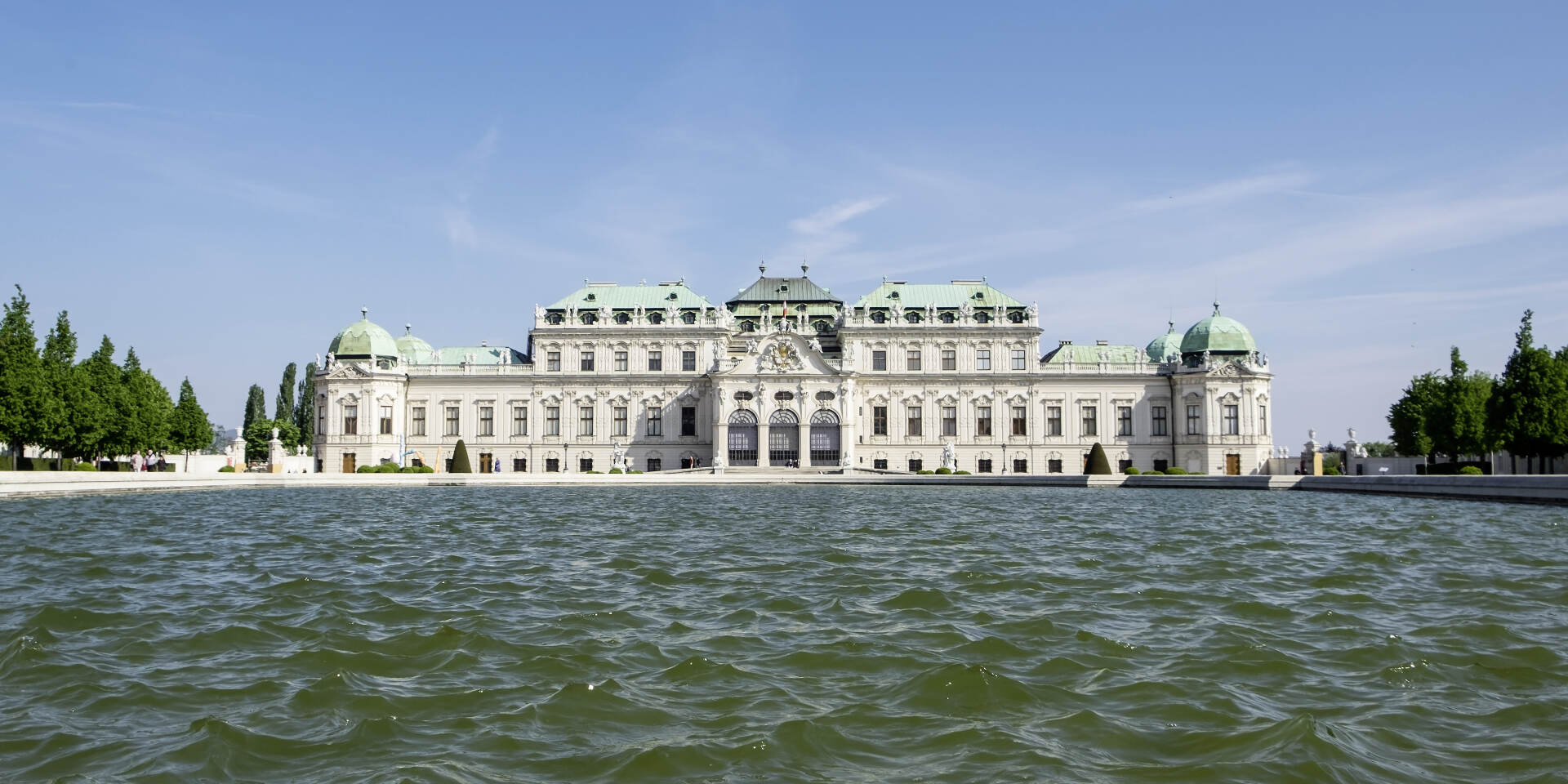
Rich in culture & tradition
Vienna, capital city of Austria
- 15 B.C. - Vindobona is established, a Roman military border camp.
- Since 1155: residence of dukes, later archdukes, emperors and kings.
- 1278: The Habsburgs take power and keep it for 640 years, until 1918.
- 1529 and 1683: the Ottoman Empire besieges Vienna. With Polish and German help, they are defeated.
A baroque building boom creates "Vienna gloriosa". Prince Eugene of Savoy's Belvedere Palace is the best example. - 1740-1790: "Mother of the country" Empress Maria Theresa (16 children!) and afterwards her son Joseph II rule and reform Austria.
Mozart decides to become the first freelance composer of the western world and lives in Vienna for ten years until his death in 1791. - 1805 and 1809: Napoleon's French armies occupy the city where Haydn, Beethoven and Schubert live.
- 1814/15: the Congress of Vienna redraws the map of Europe, guided by Metternich.
- 1848: revolution by citizens and workers. The emperor's army is victorious.
- From 1858: the Ringstrasse is laid out as the show boulevard of the Danube Monarchy.
- 1867: Johann Strauss Junior composes "The Blue Danube Waltz", probably the best-known piece of music in the world.
- By 1900: Vienna is a metropolis with a population of far over a million people. Most famous are the imperial couple Franz Joseph and Elisabeth, Johann Strauss Jr., Sigmund Freud (2006 sees the 150th anniversary of his birth), Otto Wagner, Johannes Brahms, Gustav Mahler, Arthur Schnitzler, Stefan Zweig, Gustav Klimt, Egon Schiele.
- 1914–1918: much is lost during World War I. The Austro-Hungarian Empire collapses.
- 1918–1934: Vienna is big, Austria is small. The city is red, the country black. Many conflicts result. "Red Vienna" gains international acclaim - and hate in Austria - for its progressive municipal policies.
- 1934: the Blacks oust the Reds, in 1938 the Nazis oust the Blacks. Vienna becomes a province of the Third Reich. The Jewish Viennese are looted and forced into The Five Viennas & History exile or murdered. At the end of World War II in April 1945, literally and morally much rubble remains in Vienna.
- 1955: the allied occupation forces are withdrawn. With the Austrian State Treaty the republic becomes sovereign. ( 50-year jubilee in 2005!)
- 1989: the Iron Curtain disappears, neighbors now are able to visit Vienna again
- 1995: Austria becomes member of the European Union.
- 1996: Schönbrunn Palace (with park and zoo), summer residence of the Habsburgs, is included in UNESCO's world cultural heritage list.
- 1998: Austria's membership in the Schengen Treaty is effective. No controls any more at the borders with Germany and Italy.
- 1999-2002: Austria introduces the euro, together with ten other countries.
- 2001: Vienna's old city is included in UNESCO's world cultural heritage list.
- 2004: Austria's northern and eastern neighbors become members of the European Union.
- 2005: World Ice Hockey Championships in Vienna
- 2006: Austria will have the Presidency of the EU from January through June in Mozart Year (250th birthday!)
- 2008: The finals of the European Soccer Championships (UEFA Champions League) will take place in Vienna

© WienTourismus | Christian Stemper

© WienTourismus | Willfried Gredler-Oxenbauer

© WienTourismus | Christian Stemper

© WienTourismus | Peter Rigaud